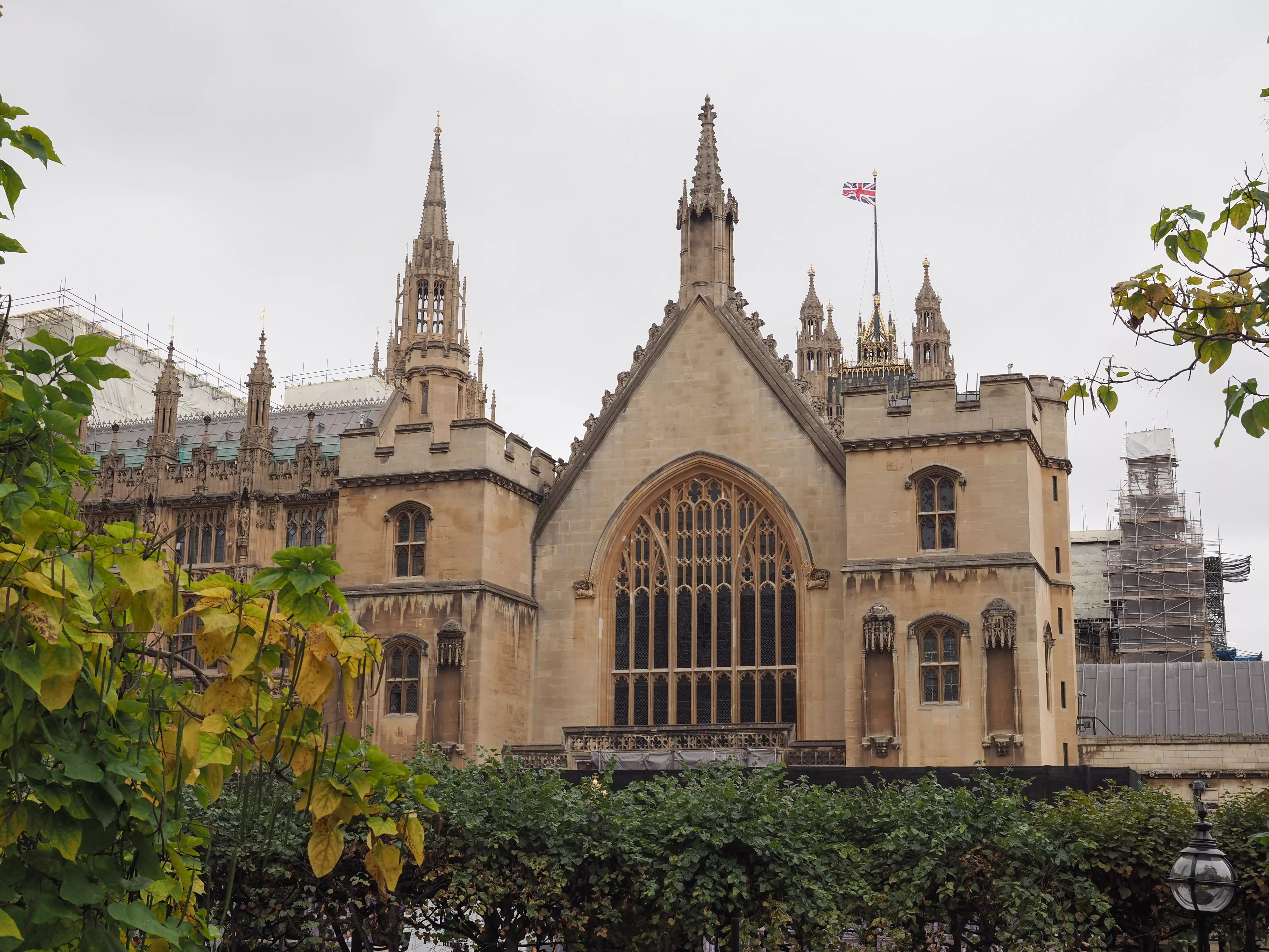 The exterior of Westminster Hall today.
The exterior of Westminster Hall today.
At the close of a Coronation service, and in preparation for the ceremonial exit from Westminster Abbey, the sovereign would privately exchange the heavy St Edward's Crown (if that had been used) for the lighter Imperial State Crown.
Up to and including George IV's Coronation in 1821, the procession wound its way back by the same route into Westminster Hall for a banquet. The Monarch once again sat on the marble throne, in front of which stood a long marble table, sadly also destroyed in 1661. Between 1661 and 1821, therefore, a portable throne and dining table were placed temporarily on the raised platform at the Hall's southern end.
Illustrations indicate that, perpendicular to this platform, and running down the length of the Hall, was one wide table on either side of a broad central aisle. Specially constructed tiered galleries lined the Hall’s long walls, so that (presumably famished) non-dining guests could look down, no doubt enviously, upon the diners – a curious arrangement!
As food history has become a very active field of research, scholars are particularly interested in Coronation fare. We know a lot about the three-course meal provided after Henry VI's Coronation in 1429. For the most part, the menu offered the standard 15th Century range of meat, fish and fowl, including beef, boar, venison, carp, crab, pike, chicken, crane and swan. Out of the ordinary, however, were the 'subtleties' – elaborate confections deploying heraldic emblems, geometric shapes and, in some cases, gold – that came with sophisticated verses composed by the poet John Lydgate. During the banquet, the Champion – by hereditary right, the head of the Dymoke family – rode into the Hall's central aisle and dramatically threw down the gauntlet, declaring his willingness to fight anyone who denied the Monarch's title to the crown.